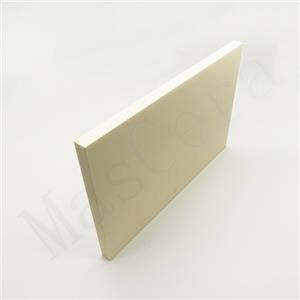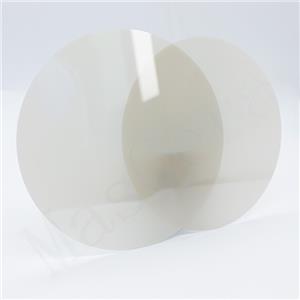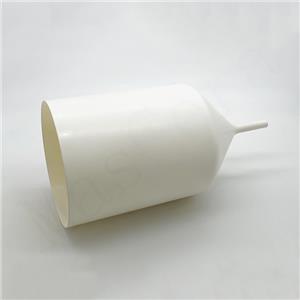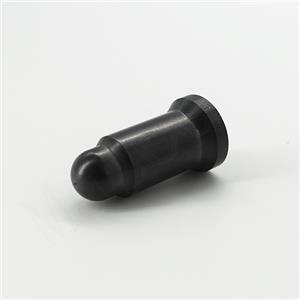Why Do Alumina Ceramics Discolor Under Sunlight?
Alumina Ceramics are widely used in high-temperature insulation, precision machining, and corrosion-resistant applications, not only for their mechanical stability but also for their signature white appearance. However, many users of Alumina Ceramics have observed that after prolonged exposure to sunlight, some components begin to show visible discoloration—often a yellowish or dull hue on the surface. While this change does not impair performance, it raises concerns about the long-term stability and appearance of the material.
What Causes Discoloration in Alumina Ceramics?
1. Trace Impurities in High-Purity Alumina Become Active
Even when using High-Purity Alumina (≥99.5%), it is still possible for trace impurities such as iron (Fe), manganese (Mn), or chromium (Cr) to exist within the ceramic. These impurities tend to accumulate at the grain boundaries during the sintering process. Initially, they remain invisible and do not affect the appearance. However, under sunlight—especially UV radiation and elevated temperatures—these impurities can undergo oxidation:
Fe²⁺ can oxidize to Fe³⁺ in the presence of UV light and oxygen, forming brownish Fe₂O₃;
Mn²⁺ may oxidize to dark MnO₂ over time.
This chemical transformation occurs gradually and irreversibly, altering the color of Alumina Ceramics even though their mechanical and electrical properties remain unchanged.
2. UV Radiation and Heat: A Catalytic Duo
Sunlight is not just a source of heat—it contains intense ultraviolet (UV) radiation. UV rays accelerate the oxidation process of the trace metal ions located in grain boundaries or on the surface. During hot summer months, the surface of Alumina Ceramics can exceed 60°C, further accelerating this oxidation. The combination of UV energy, elevated temperature, and atmospheric oxygen creates a slow but inevitable color change in High-Purity Alumina components.
Why Some Alumina Ceramics Stay White
Not all Alumina Ceramics are equally susceptible to discoloration. Several factors affect whether the surface will fade or stay white:
Purity Level: 99%, 99.5%, or ≥99.9%—the higher the purity, the more resistant the ceramic is to discoloration.
Surface Treatment: Polished, glazed, or sealed surfaces are less prone to oxidation.
Distribution of Impurities: The homogeneity of the ceramic during sintering can reduce the presence of impurity clusters.
Post-Processing Contamination: Acid washing or improper cleaning may introduce external metallic ions that accelerate discoloration.
In general, High-Purity Alumina ceramics with a dense microstructure and clean, controlled post-processing steps will retain their original white color—even after prolonged sun exposure.
Mascera's Suggestions for Protecting Alumina Ceramics
To ensure long-term color stability and surface consistency of Alumina Ceramics, Mascera recommends:
Avoid exposing unassembled or unpackaged components to direct sunlight.
After cleaning, ensure complete drying and store the parts in UV-protective or foil-sealed packaging.
For customers with strict appearance requirements, choose High-Purity Alumina (≥99.9%) to minimize the risk of surface discoloration.
While discoloration of Alumina Ceramics under sunlight does not affect their core performance, it is a natural result of impurity oxidation triggered by UV light and heat. Understanding this phenomenon allows users to make informed decisions in selecting and storing High-Purity Alumina products. At Mascera, we are committed to providing technical ceramic solutions that combine both functionality and long-lasting appearance.
For more information about Alumina Ceramics or to request technical support, please contact us directly.




